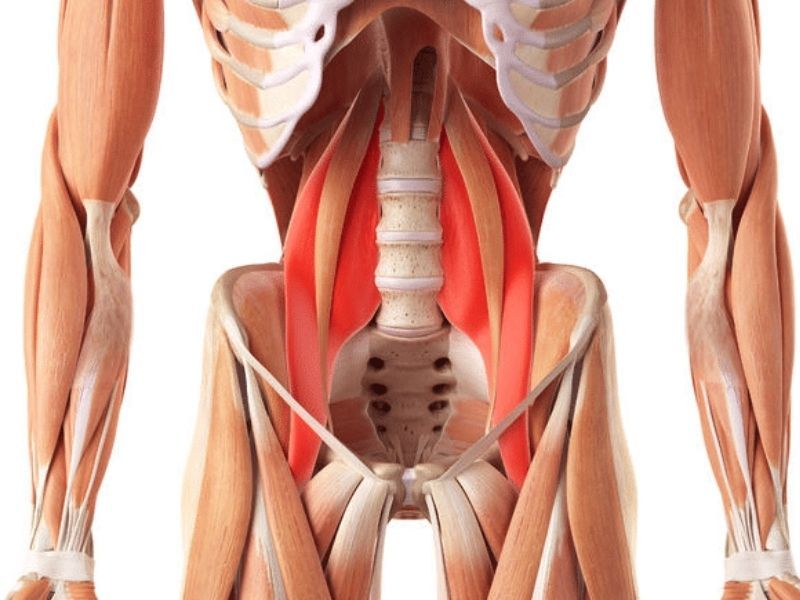Debunking Myths and Misconceptions About Psoas Stretching

Table of Contents
- - Myth 1: Psoas stretching is only for athletes.
- - Myth 2: You should feel pain during psoas stretching.
- - Myth 3: Psoas stretching alone can eliminate lower back pain.
- - Myth 4: More intense psoas stretches lead to faster results.
- - Myth 5: Psoas stretching results are immediate and permanent.
- - Conclusion
Psoas stretching is an essential aspect of maintaining flexibility and preventing injuries. However, several myths and misconceptions can lead to confusion, improper technique, or unrealistic expectations. In this blog post, we will debunk common psoas stretching myths and provide clarity to help you optimize your stretching routine and experience the full benefits of a more flexible and healthy body.

Myth 1: Psoas stretching is only for athletes.
Fact: Psoas stretching is beneficial for people of all fitness levels and lifestyles. While athletes can certainly benefit from improved flexibility and reduced injury risk, sedentary individuals, office workers, and seniors can also experience the advantages of psoas stretching, such as improved posture, reduced lower back pain, and increased mobility.
Myth 2: You should feel pain during psoas stretching.
Fact: While it’s normal to feel mild discomfort or a pulling sensation during stretching, you should never experience pain. Pain can be an indicator that you’re pushing your body too hard or using improper technique, which can lead to injury. Always listen to your body and modify or stop the stretch if you feel pain.
Myth 3: Psoas stretching alone can eliminate lower back pain.
Fact: While psoas stretching can help alleviate lower back pain by reducing tension in the hip flexors, it’s essential to adopt a comprehensive approach to address the root causes of pain. This may include strengthening core muscles, improving posture, and addressing muscle imbalances. It’s important to consult a healthcare professional, such as a physiotherapist or chiropractor, to identify the underlying issues and create a personalized treatment plan.
Myth 4: More intense psoas stretches lead to faster results.
Fact: When it comes to psoas stretching, it’s crucial to prioritize proper technique and gradual progression over intensity. Forcing your body into extreme stretches can cause muscle strains, joint pain, and even injuries. Instead, focus on maintaining correct alignment, breathing deeply, and gently increasing the stretch over time to experience sustainable, long-term benefits.
Myth 5: Psoas stretching results are immediate and permanent.
Fact: While you might feel some relief after a single psoas stretching session, achieving lasting flexibility and reduced pain requires consistency and dedication. Incorporating psoas stretching into your regular routine will help you maintain and improve your flexibility over time. Keep in mind that muscle tightness can return if you stop stretching regularly, so it’s essential to stay committed to your routine. Additionally, adding specific psoas release techniques can expedite the process.
Conclusion
Debunking common myths and misconceptions about psoas stretching can help you approach your flexibility journey with realistic expectations and proper techniques. By understanding the facts, you can optimize your psoas stretching routine, prioritize safety, and enjoy the full benefits of a healthier, more flexible body. Remember to consult a healthcare professional or certified personal trainer if you have pre-existing conditions or concerns, and always listen to your body to avoid injury.
Sam Visnic
I’ve spent my life studying the fundamental aspects of human health with a focus on movement and clinical massage therapy. In a world of specialists, surgical procedures, drugs and quick fix remedies, I’m committed to finding and developing strategies that help people stuck at the “gap”. Over the last 20 years I’ve studied dozens of systems and methodologies for uncovering the root cause of aches and pains, along with postural and movement issues. Pain science, the art and science of hands-on soft tissue massage techniques, myofascial release, and coaching movement is essential in my practice. Integrating different methods but above all deciphering WHEN to use different techniques with different people and situations, along with integration of movements that people want to be able to do again is the key to long term success with my incredible track record with clients. Understanding the various elements that contribute to conditions and the power of communication and education makes my Release Muscle Therapy program separate from other hands-on therapy approaches.
Blogs You May Be Interested In
Categories
-
Deep Gluteal Pain Syndrome
-
Deltoids
-
Fallbrook
-
Foam Rolling
-
Glutes
-
Hamstrings
-
Hypnosis For Pain
-
Lats
-
Levator Scapulae
-
Lifestyle
-
Massage Therapy
-
Mobility
-
Movement and Exercise
-
Murrieta
-
Muscles
-
Nutrition
-
Obliques
-
Pain
-
Pectorals
-
Piriformis
-
Plantar Fasciitis
-
Product Review
-
Psoas
-
Quadratus Lumborum
-
Quadriceps
-
Rhomboids
-
Serratus Anterior
-
SI Joint
-
Sternocleidomastoid
-
Stretching
-
Subscapularis
-
Temecula
-
TMJ
-
Trapezius
-
Uncategorized
















